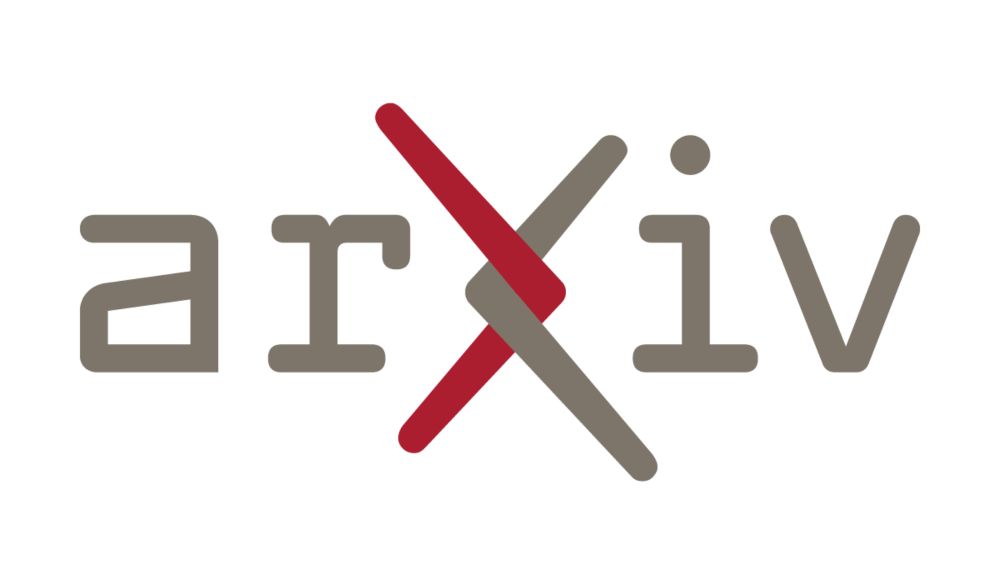
Welcoming summer the best way we know how: with pasta, physics, and a phenomenal team 🍝⚛️
A warm #Google #Quantum #AI welcome to Manuel Rudolph, who’s joining us this summer! 🎉 We’re thrilled to have his sharp mind and curious spirit with us
Thx Nikita+team for organizing
25.07.2025 05:50 — 👍 11 🔁 1 💬 0 📌 0
Huge thanks to @joeytindall.bsky.social. I had a great time working with him during my 4-month stay at the Flatiron Institute in New York. This guy is amazing!
A big thank you also to @mstoud.bsky.social for having me.
@flatironinstitute.org @simonsfoundation.org
16.07.2025 10:01 — 👍 2 🔁 0 💬 0 📌 0
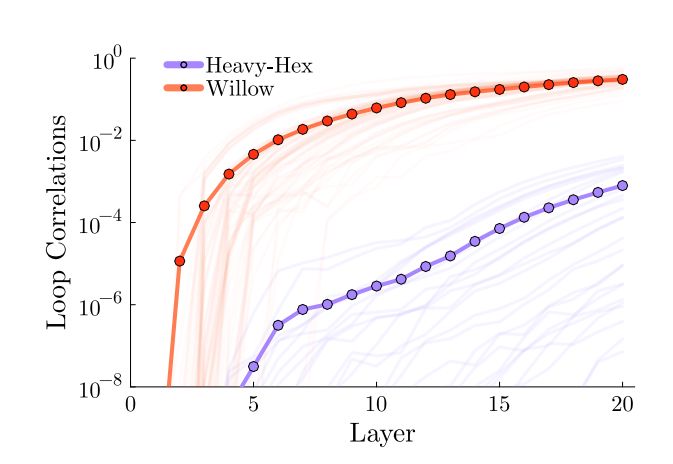
Particularly interesting to us was witnessing how slowly loop correlations build up in heavy-hex processors. Loop correlations are what make loopy networks potentially significantly harder to use than loop-free MPS and tree-tensor networks.
16.07.2025 10:01 — 👍 1 🔁 0 💬 1 📌 0
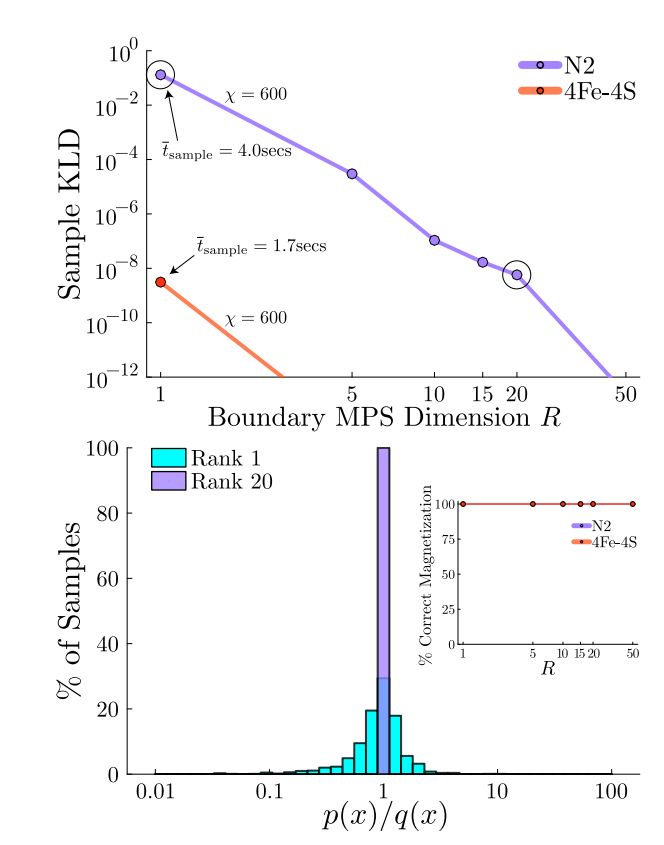
We also introduce a bunch of metrics to certify that the samples are of high-quality. This way, we verified that we solved the biggest circuit in IBM's recent quantum chemistry experiment to numerical precision.
16.07.2025 10:01 — 👍 2 🔁 0 💬 1 📌 0
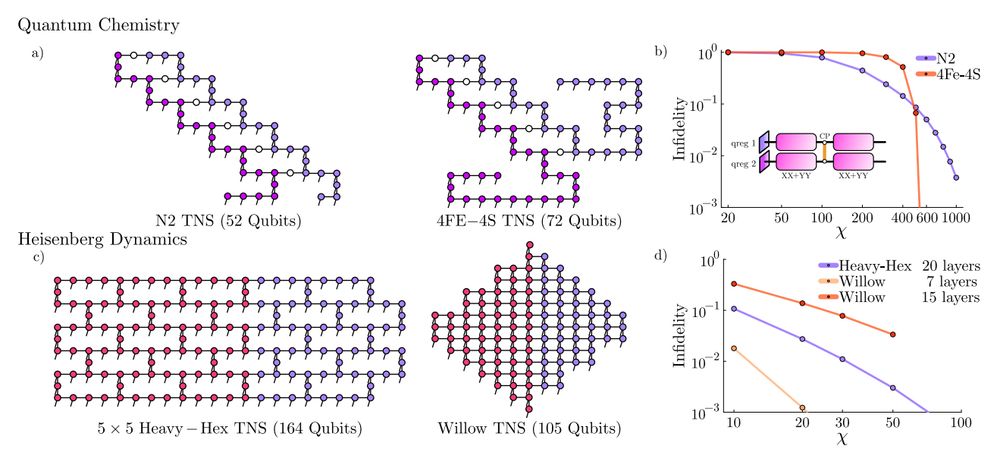
We combine some existing ideas with ITensorNetworks.jl and @joeytindall.bsky.social's flexible boundary MPS code to adapt to any planar geometry.
With our open-source (but not completely polished) software, you can start simulating and sampling 2D circuits today: github.com/JoeyT1994/Te...
16.07.2025 10:01 — 👍 2 🔁 0 💬 1 📌 0

In case you thought you can't efficiently simulate and sample quantum circuits with 2D tensor networks... Nope, you can.
Link: scirate.com/arxiv/2507.1...
We simulate IBM's recent quantum chemistry experiments and Williow + heavy-hex Heisenberg dynamics, and showcase modern, verifiable techniques.
16.07.2025 10:01 — 👍 24 🔁 0 💬 1 📌 3
Big congrats to @carrasqu.bsky.social's group at @ethz.ch, including Yuxuan Zhang and Roeland Wiersema, and particularly Matteo D'Anna for his amazing first-author work early in his PhD.
07.07.2025 11:15 — 👍 2 🔁 0 💬 0 📌 0
Oh no, haha. My bad and thanks!
07.07.2025 11:03 — 👍 0 🔁 0 💬 0 📌 0
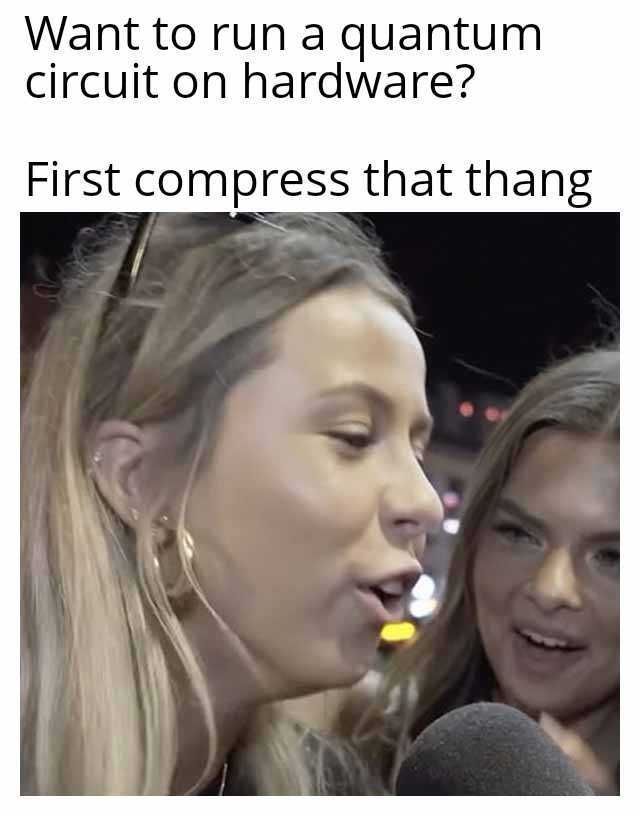
I don't see any reason why not every circuit executed on hardware should be compressed. The approach can also be used to re-compile into a different gate set or topology.
Classical simulation is not just here to compete with quantum devices.
07.07.2025 10:38 — 👍 1 🔁 0 💬 1 📌 0

Last week, we published a paper that really excites me:
"Circuit compression for 2D quantum dynamics"
Using Pauli propagation, we (Matteo) were able to compress Trotter circuits for systems up to 30x30 with depth reductions of x2 to x13.
Link: arxiv.org/abs/2507.01883
07.07.2025 10:38 — 👍 8 🔁 4 💬 2 📌 0
I'm surprised Grover's is on here. Maybe not for database search but as a form of amplitude amplification?
30.06.2025 06:34 — 👍 0 🔁 0 💬 1 📌 0
Retweeting this for the folks (myself included) that weren't online over the long weekend
PauliPropagation.jl is open source library that you can use to approximately simulate quantum circuits
We explain the nitty gritty of how these algorithms work in practise in our latest companion paper
🧵👇
02.06.2025 15:01 — 👍 18 🔁 3 💬 1 📌 0
Sorry 🤐
29.05.2025 11:37 — 👍 1 🔁 0 💬 0 📌 0
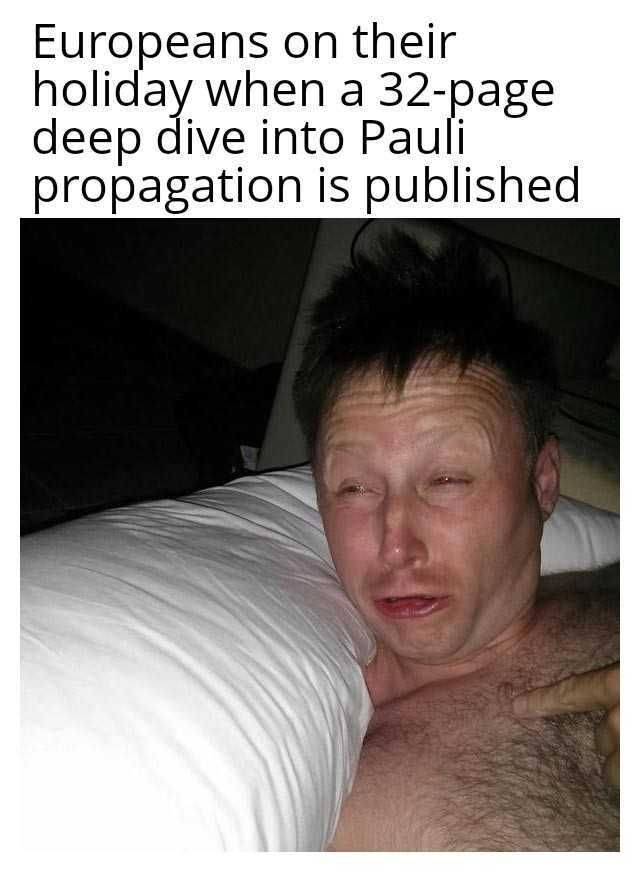
This paper was meant to go live yesterday (still love you arXiv), but who doesn't scroll social media on a holiday 💁
Thanks to my amazing group and co-authors Tyson Jones, Yanting Teng (@yteng.bsky.social), Armando Angrisani (@aangrisani.bsky.social), and Zoë Holmes (@qzoeholmes.bsky.social)!
29.05.2025 09:24 — 👍 7 🔁 0 💬 1 📌 1
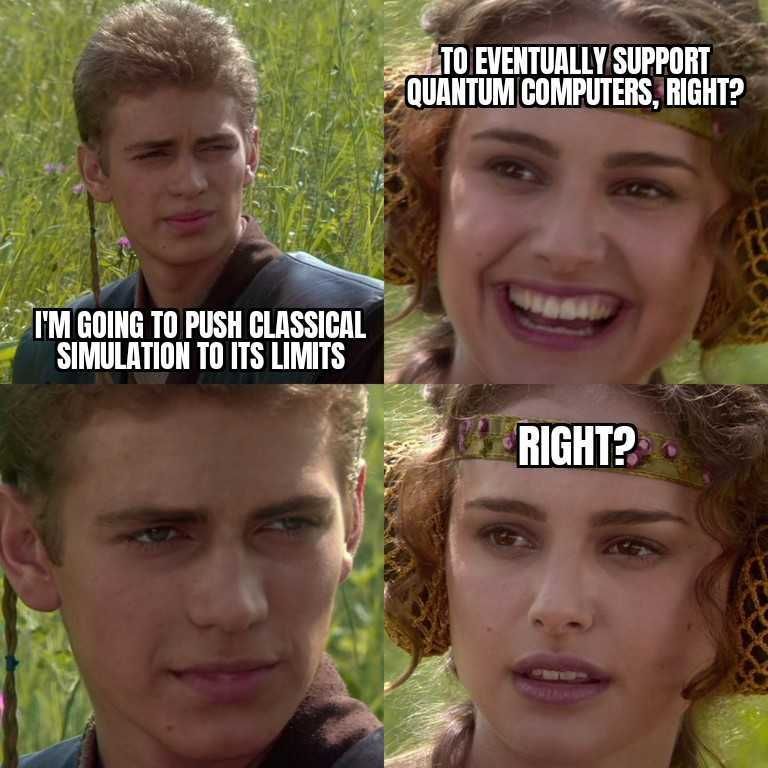
Pauli propagation is naturally interfaced with both quantum computers and other classical simulation methods - the perfect team player!
I love improving classical algorithms for simulating quantum computations, and I truly believe performant classical methods are good for everyone.
29.05.2025 09:24 — 👍 6 🔁 0 💬 1 📌 0
In VERY short:
- PP is a recent path integral method that is orthogonal to e.g. tensor networks.
- PP evolves objects that are sparse Pauli basis, commonly observables in the Heisenberg picture.
- PP is amazing for quick estimates in low-ish Magic quantum systems.
- PP is hard to converge exactly.
29.05.2025 09:24 — 👍 3 🔁 0 💬 1 📌 0
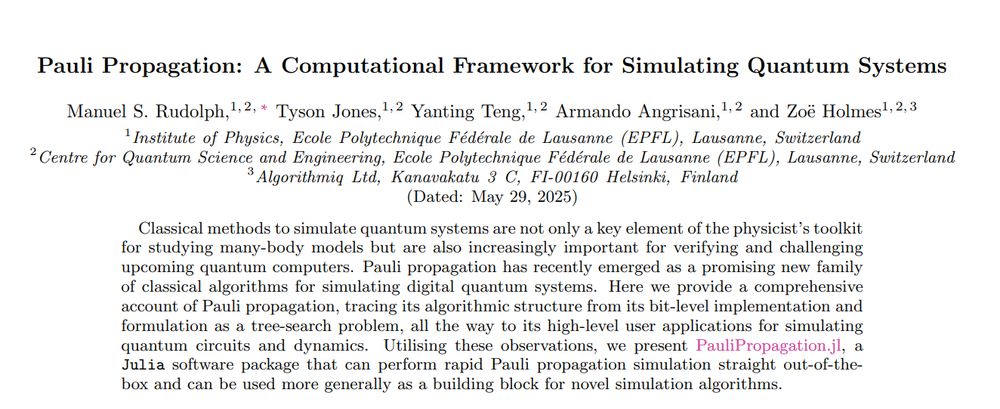
This "compact" 30-page main text manuscript summarizes much of what we have learned about Pauli propagation (PP) and where its strengths lie.
From the general framework description, over theoretical guarantees, to the nitty-gritty implementation details that you are happy to not have to deal with.
29.05.2025 09:24 — 👍 3 🔁 1 💬 1 📌 0
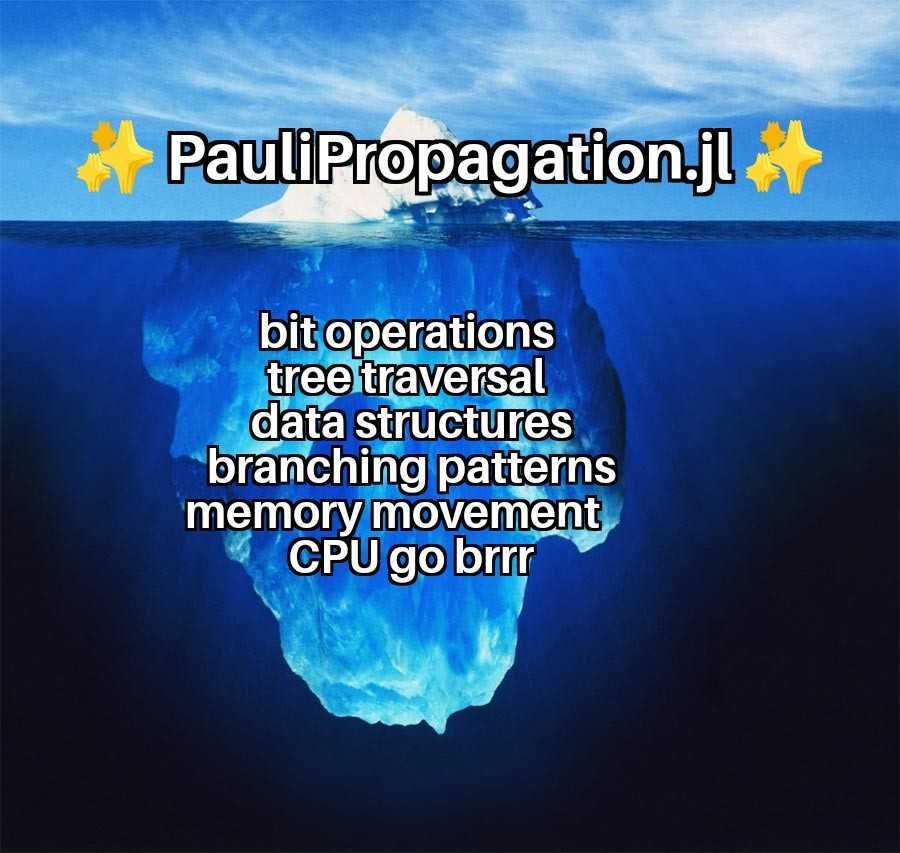
❗New paper and open-source library❗
PauliPropagation.jl is your go-to library for simulating quantum circuits via Pauli propagation. Our paper provides a thorough overview of this new classical simulation method.
Paper: scirate.com/arxiv/2505.21606
Library: github.com/MSRudolph/PauliPropagation.jl
29.05.2025 09:24 — 👍 22 🔁 2 💬 1 📌 4
unitaryHACK 2025
An open source hackathon for the quantum technology community.
Here the general link to UnitaryHACK: unitaryhack.dev
Here the link to our project page: unitaryhack.dev/projects/pau...
And keep your eyes peeled for tomorrow 👁️👁️
28.05.2025 12:52 — 👍 1 🔁 0 💬 0 📌 0
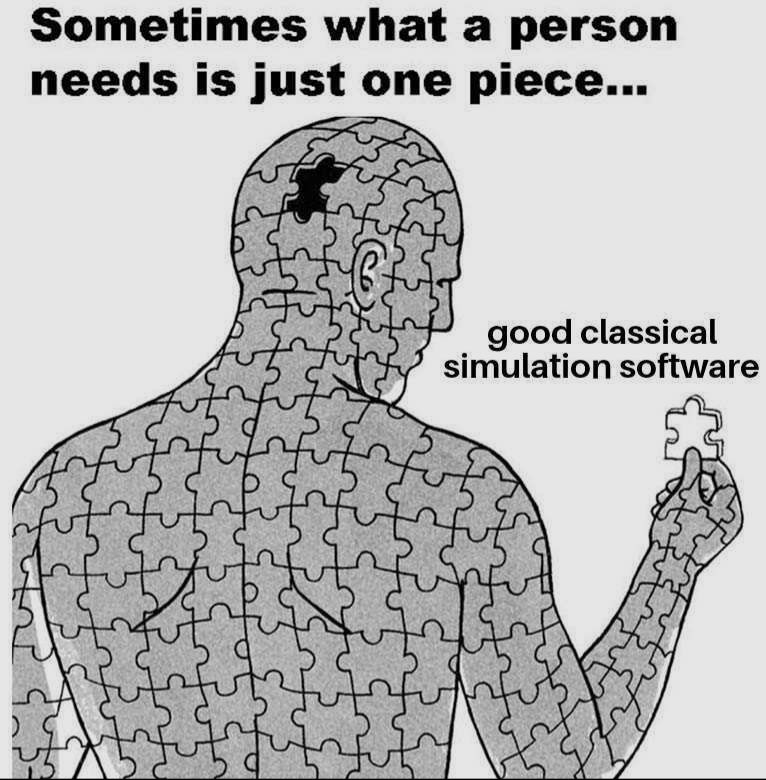
UnitaryHACK 2025 has begun - and we are part of it!
If you are registered, earn real money by closing GitHub issues in our new library PauliPropagation.jl (github.com/MSRudolph/PauliPropagation.jl).
We were supposed to have a nice and "compact" paper out today, but the arXiv gods were not with us.
28.05.2025 12:52 — 👍 3 🔁 1 💬 1 📌 0
I'm heading to APS for the week. If you are around, let me know!
Or say Hi after my talk in the C34 session on Monday afternoon.
16.03.2025 10:51 — 👍 5 🔁 1 💬 0 📌 0
And precisely at that time with a specific approach.
13.03.2025 19:44 — 👍 2 🔁 0 💬 1 📌 0
What do you mean by "spoofing"? When I say that I mean that something was a cheap or fake result that looks real. However, at least the TN results are from actual converging simulations (I can't confidently speak of the other EPFL one (shame on me)).
13.03.2025 16:38 — 👍 0 🔁 0 💬 1 📌 0
Initially I thought that @joeytindall.bsky.social's paper should have a spicier title, but now I understand that it was never the main point to debunk DWave. They present state-of-the-art circuit simulation techniques in 2D and 3D, and the benchmarks are from one of the best experimental papers.
13.03.2025 16:35 — 👍 1 🔁 0 💬 1 📌 0
It seems like proof by exhaustion is a real thing.
12.03.2025 22:55 — 👍 0 🔁 0 💬 0 📌 0
Oh no, tensor networks have out-supremed D-Wave!
10.03.2025 15:02 — 👍 27 🔁 1 💬 2 📌 0
Here we take steps to understanding the potential of warm starts for VQAs
We provide a general variance lower bound for patches of loss landscapes:
- for both structured and unstructured circuits
- to provide small-angle-initialization 'guarantees'
- to study the scaling of regions of attraction
14.02.2025 02:05 — 👍 11 🔁 1 💬 1 📌 0

New paper on arXiv 🔥
We present a bound that unifies all the previous guarantees of small regions with substantial gradients in BP landscapes. This allows us to study new architectures, parameter correlations, and points on the landscape that could not be analyzed before.
scirate.com/arxiv/2502.0...
13.02.2025 14:49 — 👍 18 🔁 1 💬 1 📌 2
Ph.D. candidate in Quantum Error Correction @ Duke University. Built github.com/planqtn for quantum LEGO. Xoogler at Google Quantum AI. Previously software engineer/craftsman for 15 years.
Fluxonium enthusiast, current #PhD at Schusterlab (formerly at Google, UChicago, IonQ, and Yale), broad reader, lifelong learner, eternal dreamer, cat dad. https://chunyangding.com
Master student in Quantum science and engineering at EPFL. Interested in classical and quantum theoretical computer science. Looking for a PhD. he/him
My typed notes: https://github.com/JoachimFavre/UniversityNotes
Twitter: https://x.com/JoachimFavre
Postdoc @DQC working on quantum algorithms and fault tolerance
previously @UofT @UBC @IITG
PhD student at UMD. Exploring quantum simulation
Quantum Computing Scientist | Science Communicator
phd student @ caltech | interested in quantum info, math education, watercolors, marine bio
https://reionize.github.io
Postdoc in Quantum Information at Scuola Normale Superiore.
Quantum Scientist at JQI & QuICS
schuckert.org
Postdoc at Los Alamos National Laboratory
Physicist doing a PhD in Quantum Machine Learning
PhD student in quantum information at ICFO
Quantum algorithms researcher at Google Quantum AI, and postdoc at Simons Institute for Theory of Computing. http://robbieking.net
Quantum Computing | Now at Blanqet | PhD at UT Austin w/ Scott Aaronson | BS at VCU
https://www.justinyirka.com/
Member of Technical Staff @ Iceberg Quantum
evanhockings.github.io
CS PhD Student @ UC Berkeley
Interested in Quantum Computing & ML
Qubit x Qubit Founding Academic Director
https://franciscavasconcelos.github.io/
Christian. Quantum experimental physicist and traditionally published science author. Quantum Software Dev @ Xanadu. PhD student @ UBC ECE. Former Software Eng @ Photonic Inc. MSc Quantum Info Sci @ UWaterloo. BSc CS and Physics @ Laurier. Views my own.













